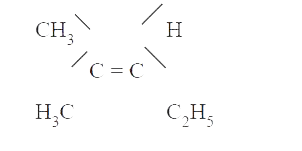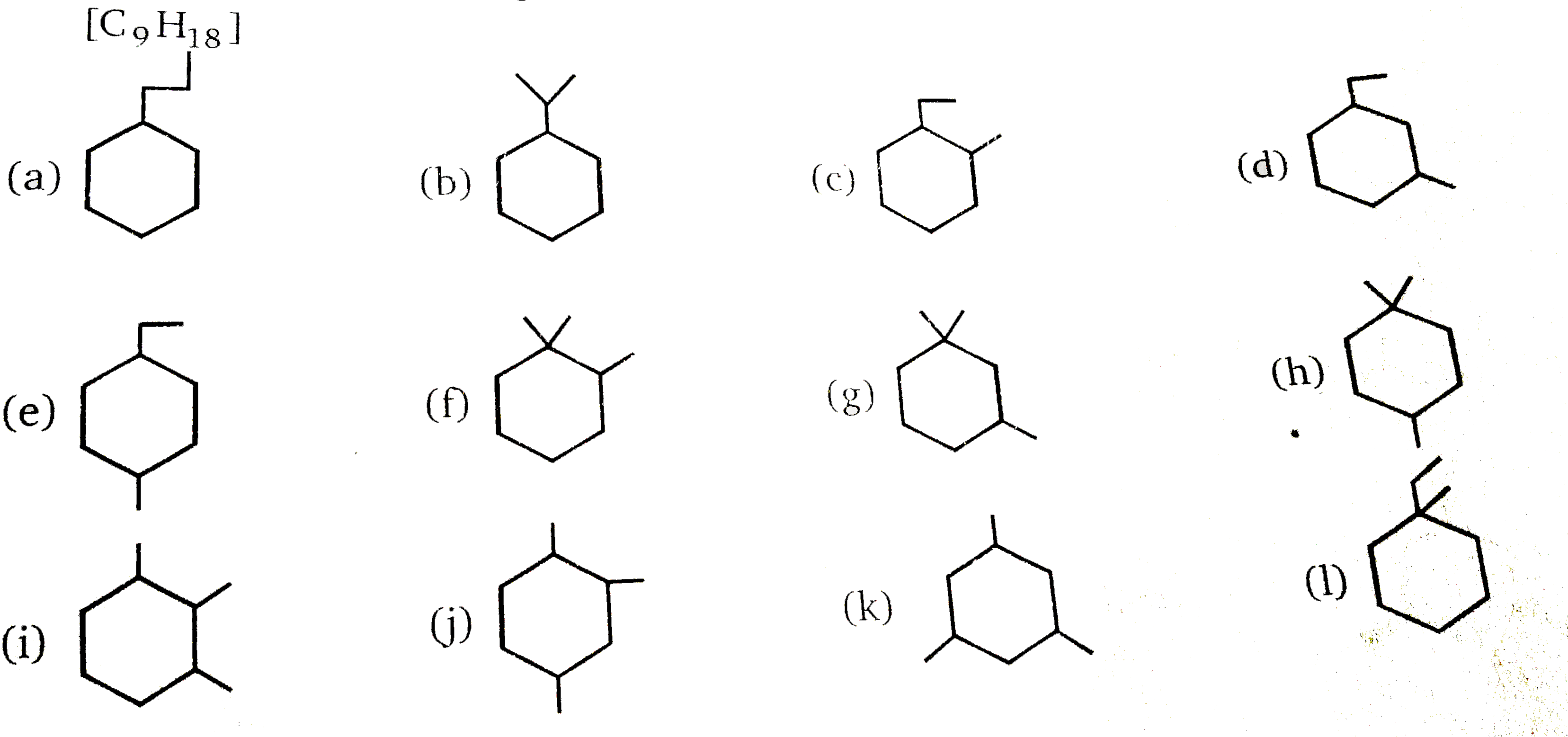InterviewSolution
This section includes InterviewSolutions, each offering curated multiple-choice questions to sharpen your knowledge and support exam preparation. Choose a topic below to get started.
| 6451. |
Two faradays of electricity are passed through a solution of CuSO_(4). The mass of copper deposited at the cathode (at. Mass of Cu=63.5 amu) |
|
Answer» 2 g Thus, 2F charge deposit 1 MOL of Cu, i.e., 63.5g. |
|
| 6452. |
What aremedicines ? |
| Answer» SOLUTION :Medicinesare therapeticuseful CHEMICALS USED indiagnosis preventionandtreatmentof DISEASES. | |
| 6453. |
Which form of Sulphur shows paramagnetic behaviour? Or Sulphur in the vapour state exhibits paramagnetism. |
| Answer» Solution :In the vapour STATE - 1000 K), Sulphur partly EXISTS as `S_(2)`, molecule which has two unpaired electrons in the antibonding `pi` molecular ORBITALS LIKE `O_(2)` and hence, `S_(2)` exhibits paramagnetism. | |
| 6455. |
Which of the properties listed below is not shown by interstitital compounds ? |
|
Answer» They are chemically REACTIVE. |
|
| 6456. |
Which can be used in place of NH_(4)CI in III group precipitation |
| Answer» Answer :A | |
| 6457. |
What is the action of acidified potassiumdichromate onpotassium iodide (KI)? |
|
Answer» Solution :Acidifiedpotassium dichromate, `K_(2)Cr_(2)O_(7)` oxidises POTASSIUM IODIDE (KI) to iodine, increasing the oxidation state of iodine from -1 to ZERO. `K_(2)Cr_(2)O_(7(aq)) +6KI_((aq)) +7H_(2)SO_(4(aq)) to 4K_(2)SO_(4)+Cr(SO_(4))_(3)+7H_(2)O+3I_(2)` |
|
| 6458. |
Which of the following is not a correct statement |
|
Answer» Every `AB_(5)` molecules does in fact have SQUARE pyramid STRUCTURE |
|
| 6460. |
What do you mean by rate of a reaction? |
| Answer» SOLUTION :Rate is the change in concentration of REACTANT PER unit TIME | |
| 6461. |
Which among the following does not exhibit geometrical isomerism ? |
|
Answer» `CH_(3)CH=CHBr` 
|
|
| 6462. |
Which of the following alkali metal halides has the lowest lattice energy ? |
|
Answer» NABR |
|
| 6463. |
Which polymer is used to prepare plastic crokery ? |
| Answer» Solution :Melamine | |
| 6464. |
Which of the following process is used for the concentration of Bauxite ? (Al_2O_3 . 2H_2O) |
|
Answer» FROTH floatation |
|
| 6465. |
Which of the following postulate is incorrect regarding Dalton's Atomic Theory? |
|
Answer» Atoms areindivisible and indestructible |
|
| 6466. |
Which is finally produced when acetylene reacts with HCl: |
|
Answer» `CH_2=CHCl` |
|
| 6467. |
Write two differences between an ideal solution and a non-ideal solution. |
|
Answer» Solution :Ideal Non-ideal OBEYS Roult's law at all range of concentration Does not obey `Delta_("MIX") H=0, Delta_("mix") V=0"" Delta_("mix")H ne 0, Delta_("mix")V ne 0` (or any other difference) |
|
| 6468. |
When HCl reacts with finely powdered iron it turne in to ferrous chloride and not ferric chloride. Why? |
| Answer» SOLUTION :It FORMS `H_(2)` GAS `Fe+2Hcl""toFeCl_(2)+H_(2)` liberation of hydrogen prevents the formation of FERRIC chloride | |
| 6469. |
Whatisgangue ? |
| Answer» SOLUTION :The earthlyandsiliciousimpuritiesassociatedwiththe ORES is calledgangue. | |
| 6470. |
Which of the following will produce only 1 product on reduction with LiAlH_(4) |
|
Answer» `CH_(3)OCOCH_(2)CH_(3)` `CH_(3)COOC_(2)H_(5)+2H_(2) underset("ether")overset(LiAlH_(4))to2CH_(3)CH_(2)OH` |
|
| 6471. |
Which compound in each of the following pairs will react faster in S_(N)2 reaction with OH^(-)? 1. CH_(3)Br or CH_(3)I. |
| Answer» SOLUTION :`I^(Theta)` is a better LEAVING GROUP than `Br^(Theta)`. So `CH_(3)I` reacts faster with `OH^(Theta)` ion in the `S_(N)2` PATHWAY. | |
| 6472. |
Which of the following will react with water |
|
Answer» `CHCl_(3)` |
|
| 6473. |
Which of the following is a highly corrosive salt? |
|
Answer» `FeCl_(2)` |
|
| 6474. |
The vapour density of sample of partially decomposed cyclobutane (C_(4)H_(8) ) gas is 20. The degree of dissociation of C_(4)H_(8) into C_(2)H_(4) gas is |
|
Answer» 0.25 |
|
| 6475. |
The standard reduction values of the three metallic cations X,Y and Z are 0.52 - 3.03 and -1.18 V respectively. The order of reducing power of the corresponding metals is |
|
Answer» `Y GT Z gt X` |
|
| 6476. |
Write preparation of : (i) Xenon - Fluorine compounds (ii) Xenon - Oxygen compounds |
|
Answer» Solution :Xenon - Fluorine compounds : Xenon forms three binary fluorides, `XeF_2, XeF_4` and `XeF_6` by the direct reaction of ELEMENTS under appropriate experimental conditions. `UNDERSET("excess")(Xe(g)) + F_(2)(g) overset(673 K, 1bar)to XeF_(2)(s)` `underset(1:5 "ratio")(Xe(g) + 3F_(2)(g) overset(573 K)/(50-70 "BAR")to XeF_(6)(s)` `XeF_6` can also be prepared by the interaction of `XeF_4` and `O_(2)F_(2)` at 143 K. `XeF_(4) + O_(2)F_(2) to XeF_(6) + O_(2)` Xenon-Oxygen compounds : Hydrolysis of `XeF_4` and `XeF_6` with water gives `XeO_(3)` `6XeF_(4) + 12H_(2)O to 4Xe + 2XeO_(3) + 24HF + 3O_(2)` `XeF_(6) + 3H_(2)O to XeO_(3) + 6HF` Partial hydrolysis of `XeF_6` gives oxyfluorides, `XeF_(6) + H_(2)O to XeOF_(4) + 2HF` `XeF_(6) + 2H_(2)O to XeO_(2)F_(2) + 4HF` |
|
| 6477. |
When dispersed phase is liquid and dispersion medium is a solid, the colloid is known as |
|
Answer» A SOLUTION |
|
| 6478. |
What is the name of Na_(3)[Ag(S_(2)O_(3))_(2)]. |
|
Answer» Sodiumargentothisuplhate |
|
| 6479. |
Which of the following biphenyls is optically active ? |
|
Answer»
|
|
| 6480. |
What is/are incorrect statement about E ? |
|
Answer» It can ecolve `CO_(2)` on reaction with `NaHCO_(3)`. |
|
| 6481. |
Which one of the following undergoes reduction with hydrogen peroxide in an alkaline medium |
|
Answer» `Mn^(2+)` |
|
| 6482. |
Which is the decreasing order of stability (i) CH_(3)-overset(+)(CH)-CH_(3)(ii) CH_(3)-overset(+)(CH)-O-CH_(3) (iii) CH_(3)-overset(+)(CH)-CO-CH_(3) |
|
Answer» `(i) LT (ii) lt (iii)` |
|
| 6483. |
Which step in aromatic electrophilic substitution reaction is exothermic in nature ? |
|
Answer» |
|
| 6484. |
Which one of the following arrangements truly represent the property indicated against it ? |
|
Answer» `Br_(2) lt Cl_(2) lt F_(2) `bond energy <BR>`Br_(2) lt Cl_(2) lt F_(2)` electronegativity Oxidising Power `=F_(2) gtCl_(2) gt Br_(2) gt I_(2) `, Electron affinity `= Cl gt F gt Br gt I` |
|
| 6485. |
Which of the following reactions is an exampleof use of watergas inthesynthesis of ther compounds |
|
Answer» `CH_(4)+H_(2)UNDERSET(Ni)OVERSET(1270k)rarrCO(g)+H_(2)(g)` |
|
| 6486. |
What is coagulation of a sol? Name two methods by which a lyophobic sol can be coagulated. |
| Answer» Solution :The process of settling of colloidal particles is called COAGULATION of the SOL. The two methods by electrophoresis OR by boiling OR by adding an electrolyte OR by MIXING two oppositely charged SOLS. | |
| 6487. |
What is a soft soap ? |
| Answer» Solution :Potassium salts of fatty ACIDS such as oleic ACID, palmitic acid and stearic acid are called SOFT SOAPS | |
| 6489. |
Which of the following hydrated salt on heating undergo hydrolysis and doesn't give anhydrated salt. |
|
Answer» `SnCl_(2).2H_(2)O` |
|
| 6490. |
Which of the following can be reduce easily |
|
Answer» `V(CO)_(6)` |
|
| 6491. |
Which of the following reactions will yield 2,2-dibromopropane |
|
Answer» `HC-=CH+2HBr to`<BR>`CH_3C-=CH+2HBr to` |
|
| 6492. |
Which of the following is not heavier than dry air ? |
|
Answer» `SO_(2)` |
|
| 6493. |
When petroleum is heated gradually, first batch of vapours evolved will be rich in: |
|
Answer» Kerosene |
|
| 6494. |
The second most electronegative elements in periodic table is: |
|
Answer» F |
|
| 6495. |
Which of the following is reversible process |
|
Answer» Melting of ice at `10^(@)C` |
|
| 6496. |
Using the data given in Q.8 find out in which option the order of reducing power is correct? |
|
Answer» `Cr^(3+)ltCl^(-)ltMn^(2)ltCr` 
|
|
| 6497. |
Total number of structural isomer of C_(9)H_(18) containg cyclohexane ring. |
Answer» 
|
|
| 6498. |
What is the osmotic pressure of a 0.0020 mol dm^(-3) sucrose (C_(12)H_(22)O_(11)) solution at 20^(@)C (Molar gas constant, R=8.314 JK^(-1)mol^(-1), 1dm^(3)=0.001 m^(3)) |
|
Answer» 4870 PA |
|
| 6499. |
The values of van't Hoff factors for KCl, NaCl and K_(2)SO_(4), respectively, are …….. |
|
Answer» 2, 2 and 2 |
|
| 6500. |
Which one is used in making non-breakable cups and laminated sheets? |
|
Answer» BAKELITE |
|